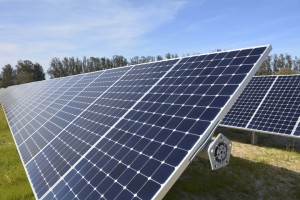
Donald Trump can’t stop the sun from shining. Despite the climate denier’s pro-fossil fuel agenda, and despite his tariffs on imported solar panels, the US still installed more solar than any other source of energy in the first quarter of the year.
The amount of solar power installed in the US climbed 13% in first quarter, according to the trade body, the Solar Energy Industries Association (SEIA).
The trade body said that solar accounted for 55 percent of all new power generation, beating new wind and natural gas turbines for a second straight quarter.
The Association expects new installations this year to be roughly the same as last year, despite Trump’s antics with tariffs that are expected to increase costs. The SEIA said it expected 10.8 gigawatts of solar to be installed, rising to 14 gigawatts by 2024.
“Solar has become a common-sense option for much of the U.S., and is too strong to be set back for long, even in light of the tariffs,” SEIA Chief Executive Officer, Abigail Ross Hopper told Bloomberg.
The Chinese solar industry though is now struggling after what is known as the “solar-coaster” where just as increased subsidies can signal a boom, removing them can lead to a downturn.
At the beginning of this month, the Chinese government announced that subsidies via feed in tariffs would be slashed, even though the country has been the largest solar installer for the last four years. Indeed, last year the country installed a whopping 55 gigawatts of solar power. This is over five times the US market.
According to the Economist, some 20 GW of projects could now be scrapped in China, leading to a potential stall in the global solar market and huge market vulnerability. The only positive of this is as demand falls, the cost of panels could also fall too, making solar more economic in other countries.
So in the short- term, Yvonne Liu, solar analyst at Bloomberg New Energy Finance, argues that “2018 is likely to be the first-ever year seeing negative annual [worldwide] installation growth.”
But medium term, there is the prospect of Chinese manufacturers flooding the global market with panels, which could help solar compete globally.
The Economist reports that Bloomberg New Energy Finance believes that this fall in panel costs could mean in the longer term “more markets may embrace solar … The cheaper solar gets, the more appealing it becomes, especially in poor countries struggling to satisfy rising energy demand.”
Nick Boyle, chief executive of Lightsource BP, a leading solar developer, says about the Chinese move: “For us it is only good,” he says.
